If you are ready to enhance your web design with expert solutions, let’s talk!
How to Use Photoshop AI Generative Fill
Welcome to the future of picture and photo editing with Photoshop AI Generative Fill! Can you imagine that you delete unwanted objects from your photos or pictures, expand backgrounds, and even add new elements in a few seconds? Sounds perfect, right? With Photoshop AI, this vision has become a reality. We at Arounda created a guide that includes step-by-step instructions and examples for using this tool. Let's find out how to use Photoshop AI Generative Fill.
In this article:
- Understand what Photoshop AI Generative Fill is.
- Learn how to edit your photo or image with Photoshop AI.
- Get the step-by-step instructions with examples.
What Is Photoshop AI Generative Fill?
AI Generative Fill is a new Photoshop function that uses artificial intelligence to comprehend your images' context and create pixel-perfect fills. It simplifies difficult editing processes into easy and fast actions. Now, you can concentrate more on your creative ideas and less on technical changes.
Imagine you have a gorgeous landscape picture, but an unwanted object blocks the view. Previously, removing it required careful cloning and healing. But with Photoshop Generative Fill, the process becomes nearly a miracle. Just make a selection around the object and let the AI handle the rest.
Do you want to know more about AI in the design industry? If yes, welcome to our Arouda blog, where you can find helpful information, tips, guides, and more. And now, let's discuss the benefits of the Photoshop AI tool.
Benefits of Using Photoshop Generative Fill
- Experiment with your images in ways that were previously time-consuming or difficult.
- Get professional results with a few clicks.
- The AI-generated pixels work seamlessly with the original image, making the modifications hardly noticeable.
- The intuitive and user-friendly design, together with the tool instructions, makes it accessible to both beginners and experts.
- Suitable for a variety of applications (from simple object removal to complicated compositional modifications).
With these advantages, Photoshop AI Generative Fill became a game-changing tool. Let's see how to use it!
How to Use Generative Fill Photoshop?
Using AI Generative Fill in Photoshop is simple and enjoyable because of its intuitive design and powerful AI capabilities. With this tool, your creative potential is limitless.
Here, we provide a step-by-step guide on how to use Photoshop AI Generative Fill.
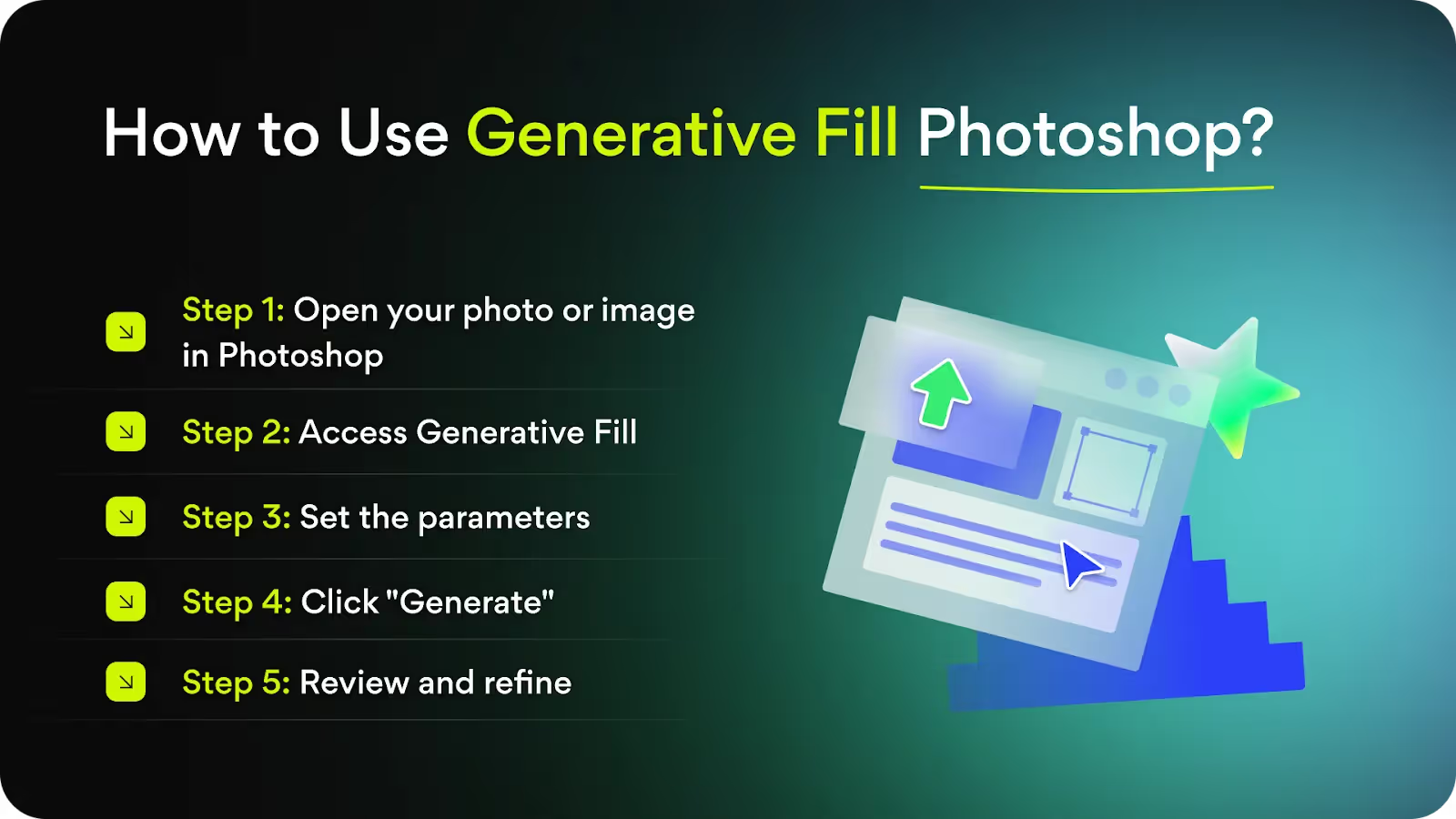
But if you have never worked with Photoshop, you should download it. We will describe each step right now.
How to Download Photoshop Generative Fill?
Step 1: Visit the Adobe Website.
Step 2: Create an account or sign in.
Step 3: Subscribe Adobe Creative Cloud. Adobe has several plans (individual, business, and student choices). Make sure your plan includes Adobe Photoshop.
Step 4: Download Adobe Creative Cloud.
Step 5: Install Photoshop. Open the Creative Cloud app, log in using your Adobe account, and select the "Apps" option. Find Adobe Photoshop in the list of available applications and click "Install."
Step 6: Update to the latest version.
Step 7: Launch Photoshop (from the Creative Cloud app or your desktop shortcut).
Step 8: Verify Generative Fill. Open an image in Photoshop and make a selection. Right-click within the selection and choose "Fill." Ensure that Generative Fill is available in the Contents dropdown menu. If it is, you're ready to create magic!
Starting Window
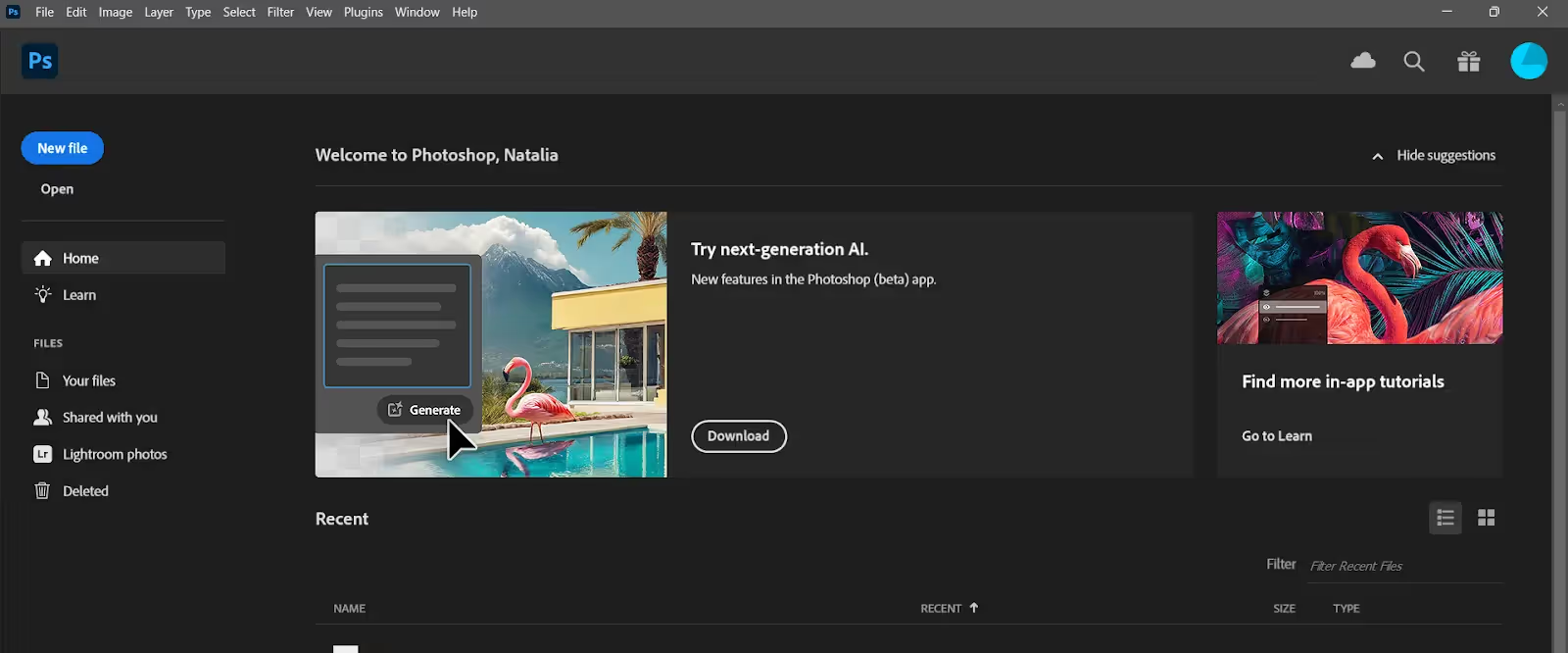
Great job! The first task is completed. Now, you should decide what to do with the photo or image. If you have many ideas, that's awesome! But if you need some inspiration, you can view our case studies.
Let's find out what you can create with the Generative AI Photoshop and get step-by-step instructions.
What Can You Create with the Generative Fill Toolbar?
Adobe Photoshop's Generative Fill toolbar is a creative powerhouse for artists, designers, and photographers. Here's an example of what you can create using this smart tool:
- Object removal
- Extend backgrounds
- Fill in the gaps and missing parts
- Create new elements
- Improve and retouch portraits
- Create textures and patterns
- Create composites
- Enhance landscape and nature
Let's look at the detailed instructions with examples. We used the same image with multiple queries to demonstrate how it works.
When you're ready to modify the photo or image, click the "New file" button in the left corner.
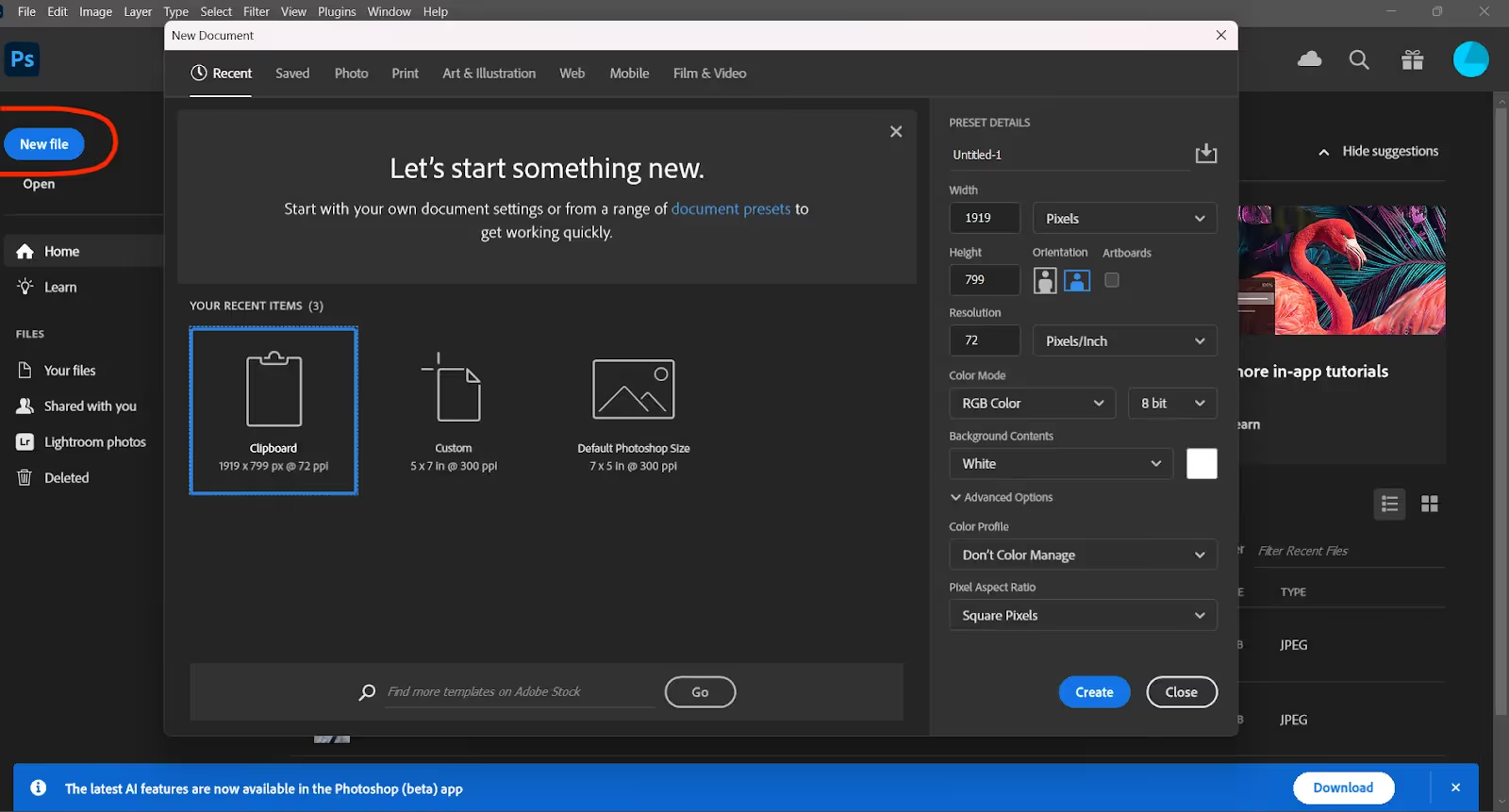
Below, you will see white paper and the "Import image" button. Press it!
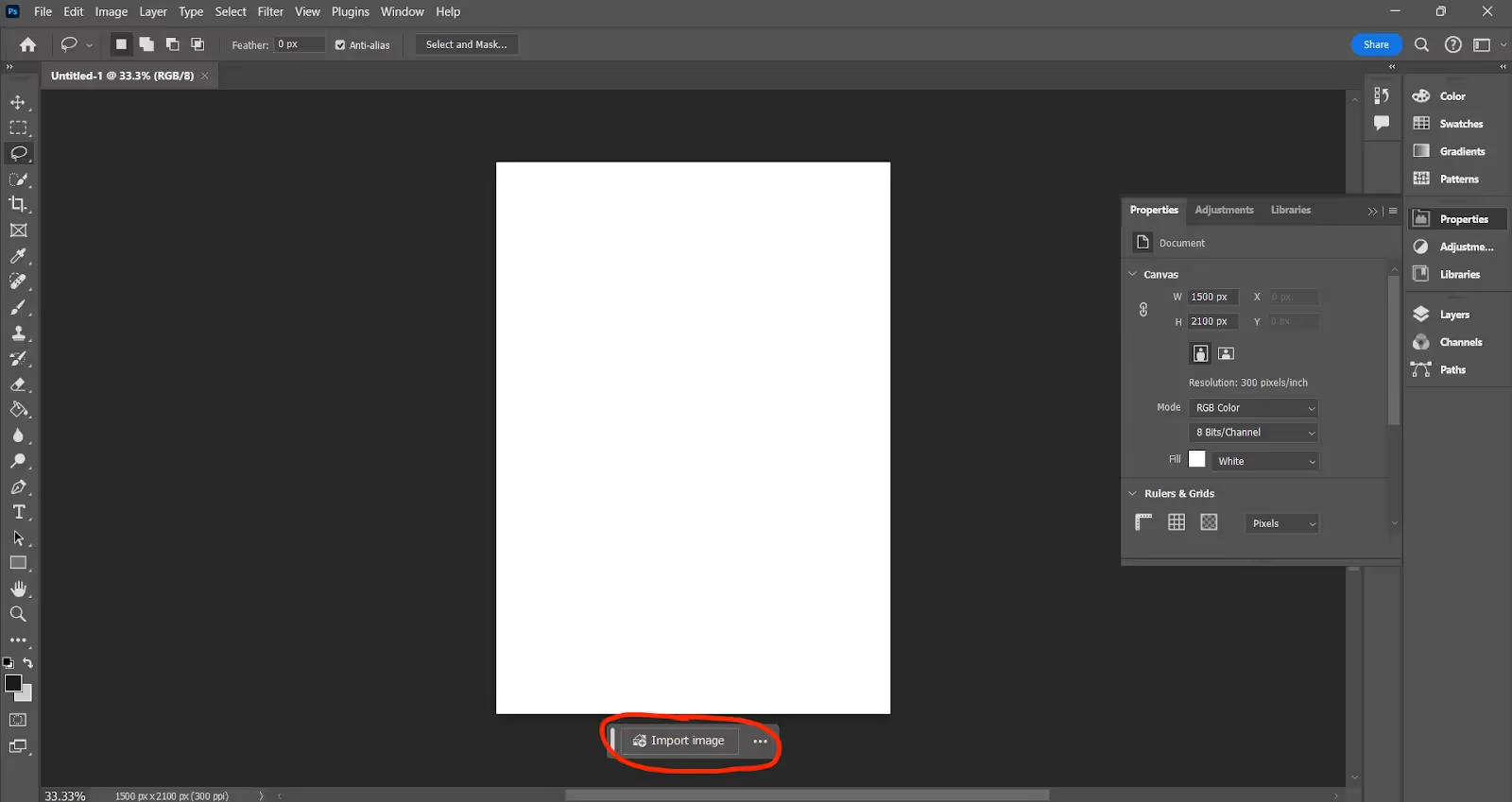
Download the photo or image from your computer. Choose the properties and adjustments.

We wanted to place a woman in the chair. We selected a chair with a touchpad and typed "a woman" in the generative fill.
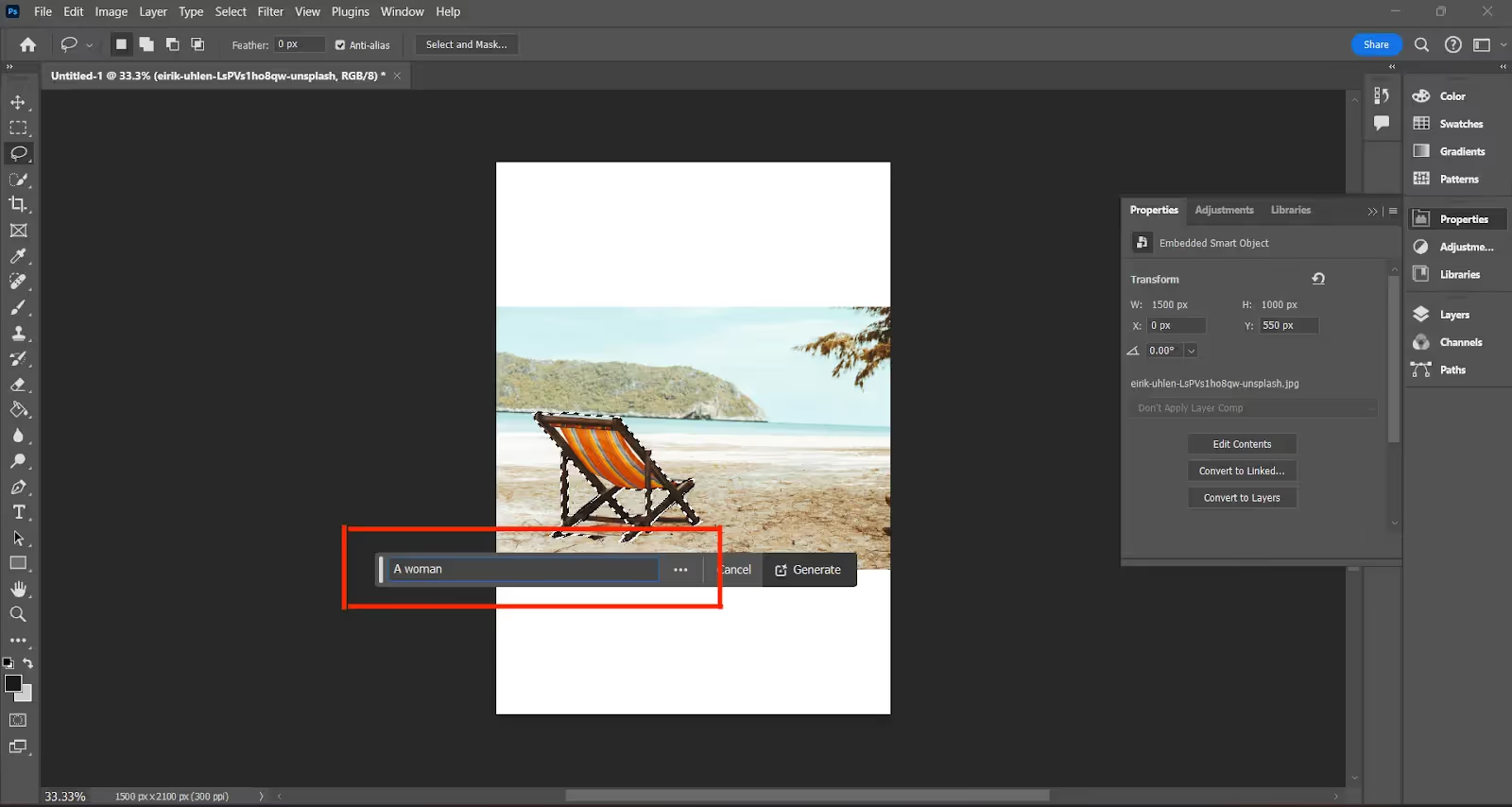
We had 15 options to choose from.
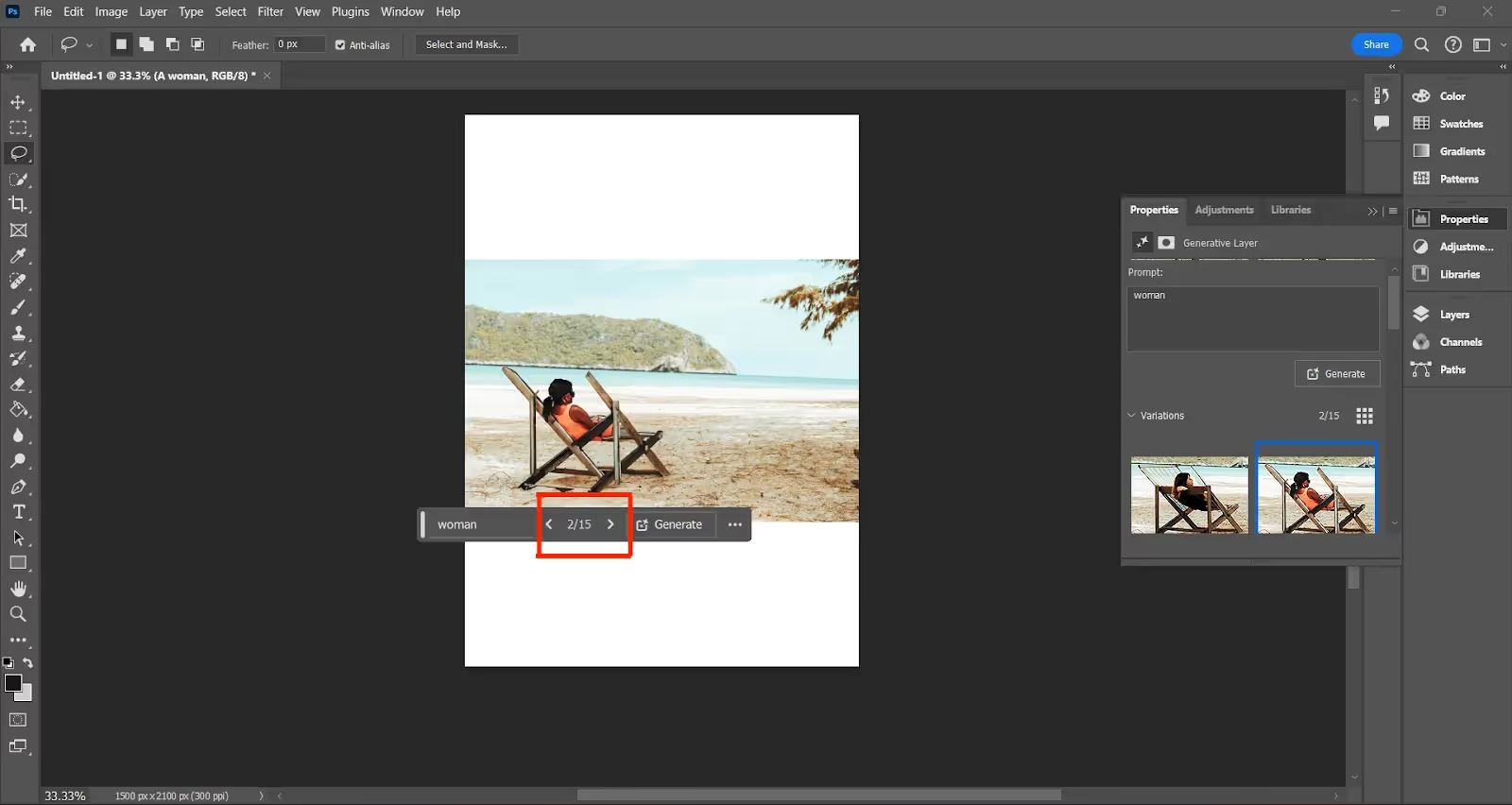
Let's try to place the dog in a space. We chose the location and typed "a dog." Then we pressed the "Generate" button.
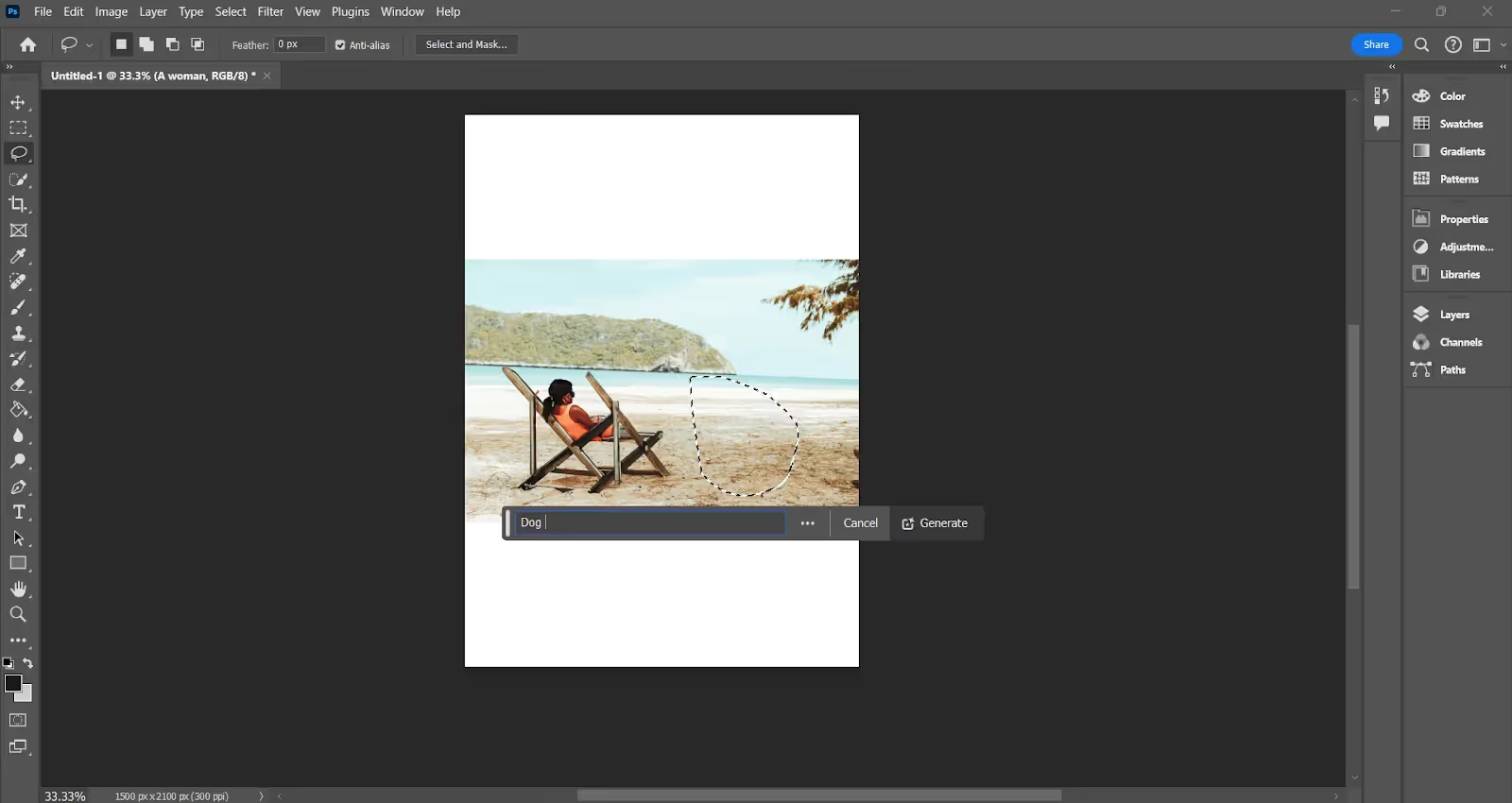
And we received a result that had several alternatives.
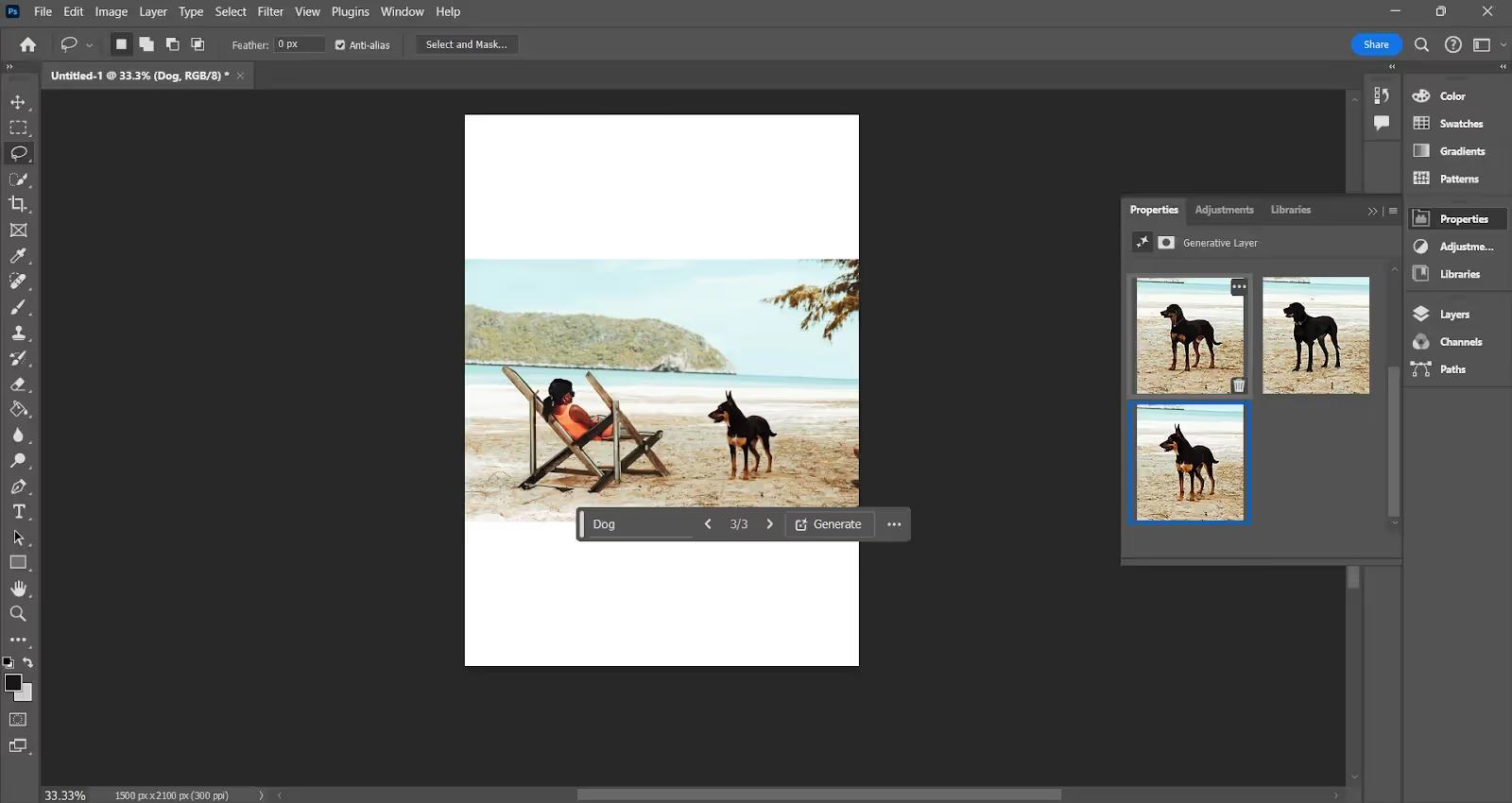
How about photo extensions? Let us make the sky higher. You should choose the extension part and type what to draw there. In our case, it is the sky.
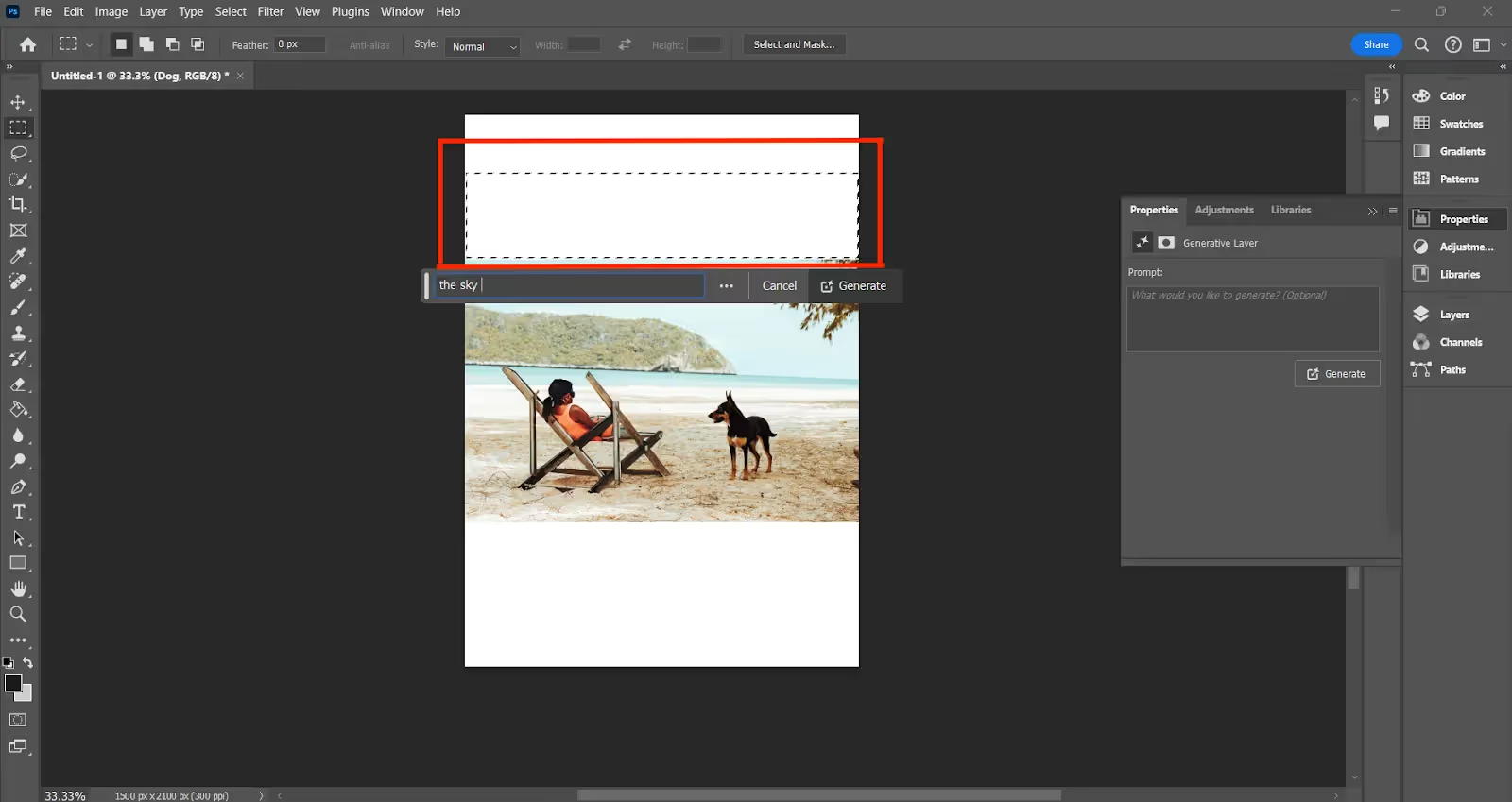
And here is the result.

Also, we added a boat to the selected part of the sea.
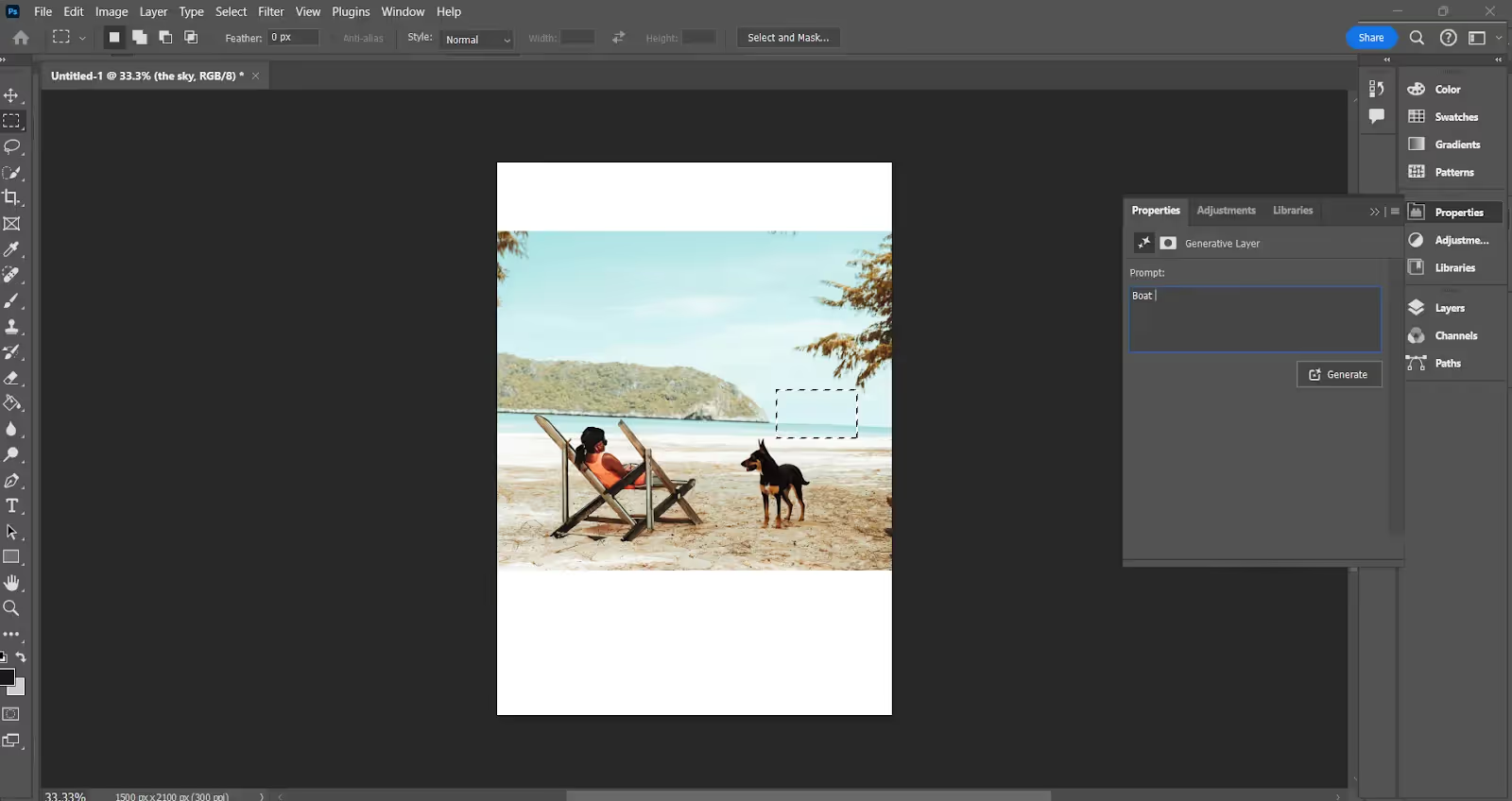
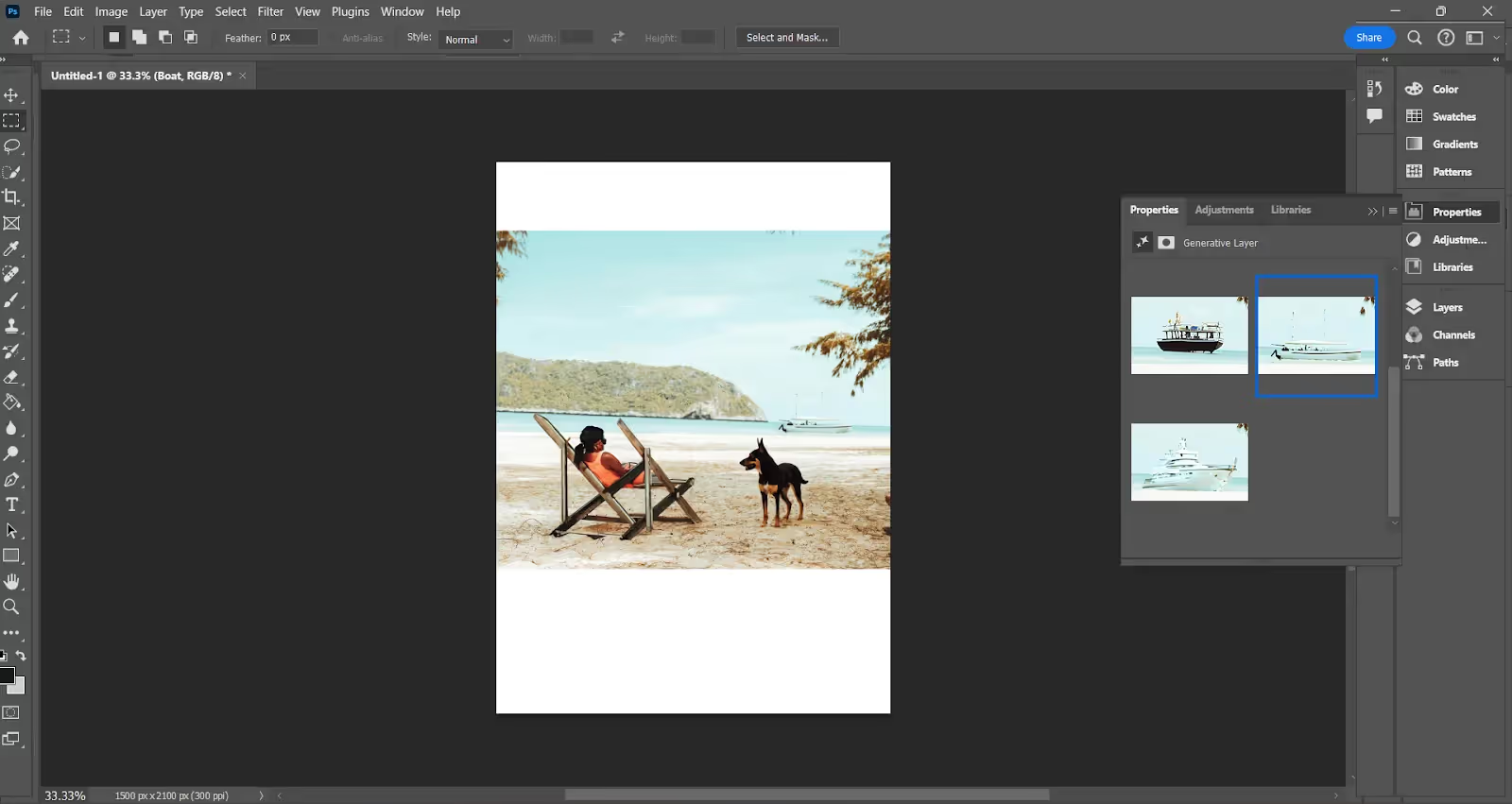
Is it possible to change that big hill into an old city? Sure! Select the hill, type "an old city," and get a different landscape.

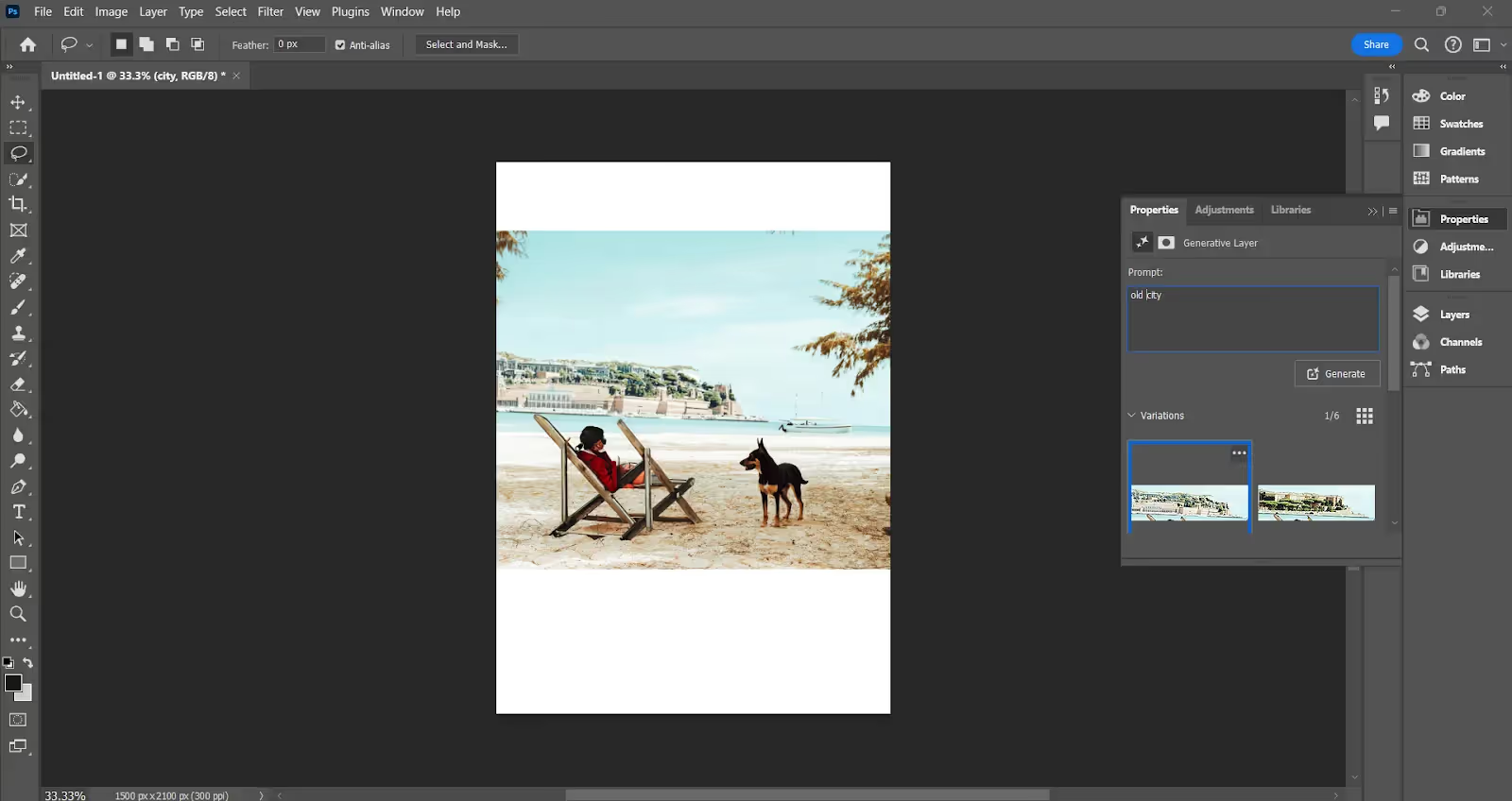
Photoshop Generative Fill is a great example of the power of words. Simply type how you need to change the object, and here you are! Experiment with the description, add more details, use different features, and enjoy the process.
But in the modern world, successful projects need more than just editing. They require advanced graphic design skills. You can experiment with AI tools or hire our specialists who turn your ideas into reality.
Final Thoughts
Photoshop AI Generative Fill is a groundbreaking tool that improves the digital editing process. You can delete undesired objects, extend backgrounds, create new elements, and much more. It allows you to get professional results with minimal effort, transforming images and designs in a few clicks.
We at Arounda hope that now you know how to use AI in Photoshop. There's no more time to wait! Experiment with your ideas.
One more thing: if you need professional assistance or a competitive modern design, our team is ready to help. Please contact us to boost your projects!














